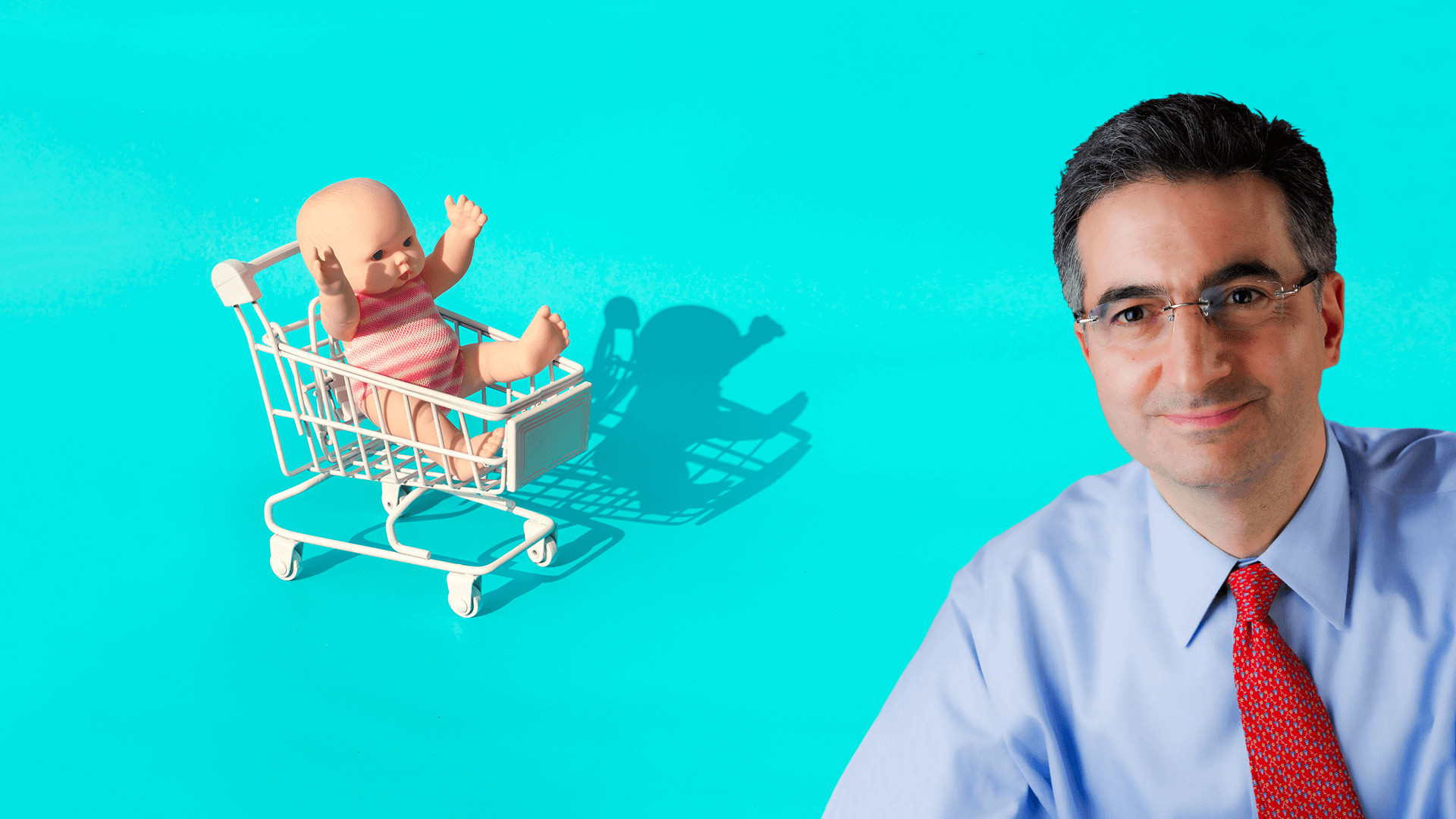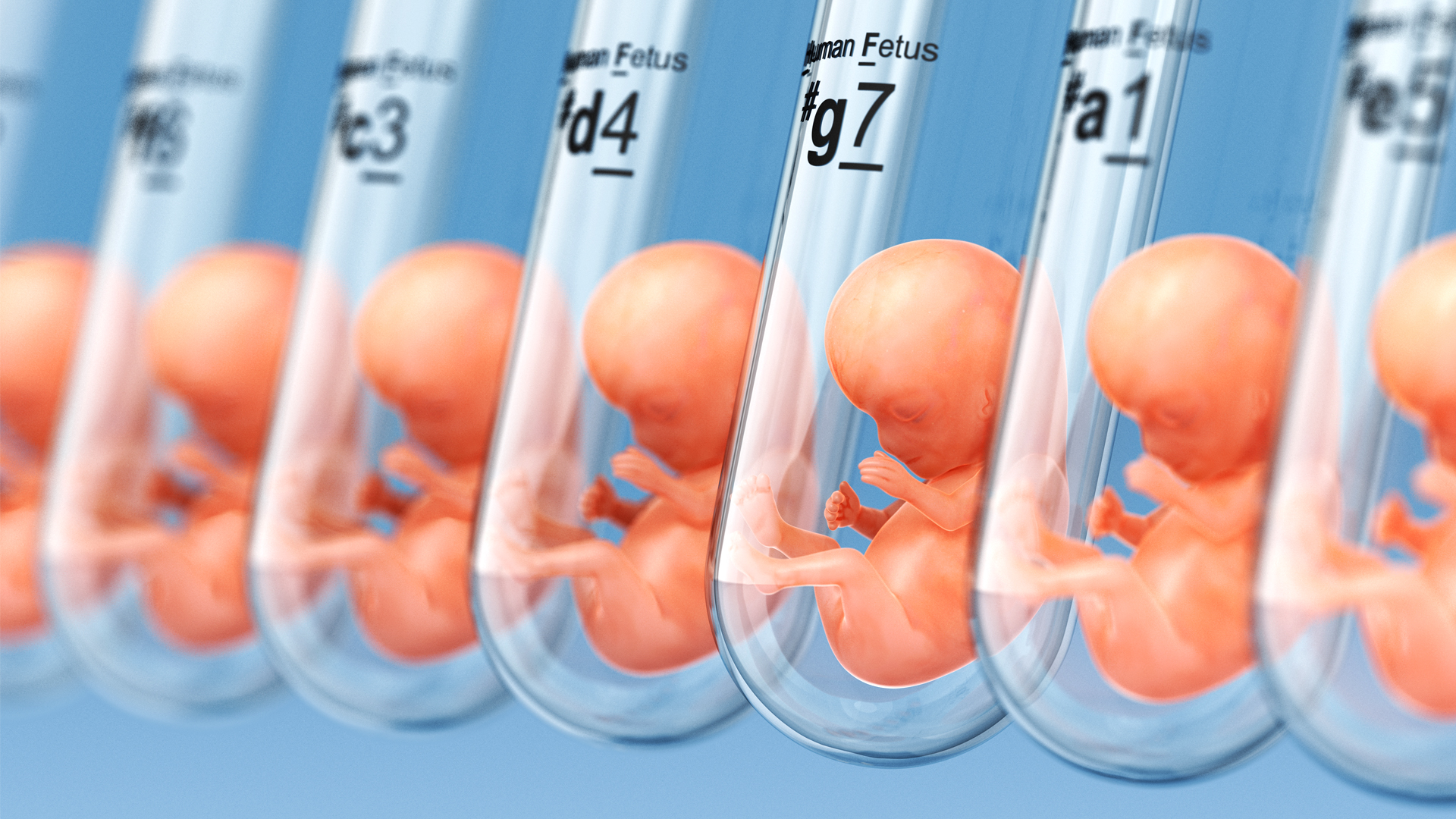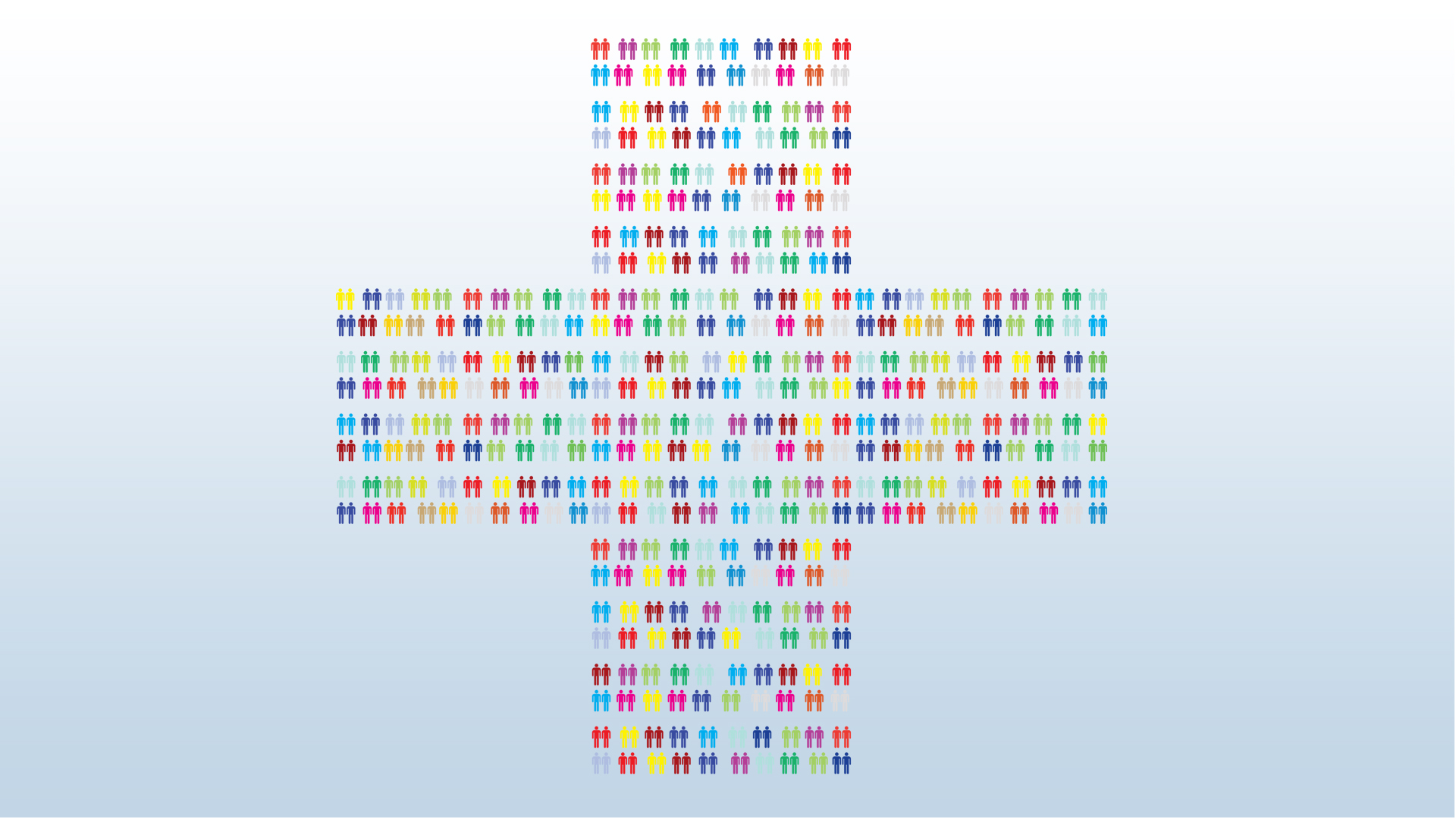The ART of Having Children
Is Assisted Reproductive Technology the Wave of the Future?
In the face of increasing options for selecting our future children, author and medical doctor Robert Klitzman asks, “What kind of society do we want in terms of our ability to design babies?”
“I’m looking for a sperm donor,” she said.
So begins Robert Klitzman’s new book. If you’re imagining that Klitzman is a provocative new writer of edgy cosmopolitan fiction, guess again. In Designing Babies: How Technology Is Changing the Ways We Create Children (2020), the medical doctor explores the many ways in which babies are created today. These ARTs (assisted reproductive technologies) may seem like fiction, but they’re not. Increasing numbers of hopeful parents are investing in ART procedures.
In vitro fertilization (or IVF, the bringing together of sperm and egg outside the body) is the core ART process. Since Louise Brown’s birth in 1978, IVF has added more than 8 million babies to both traditional and nontraditional families. But many millions more embryos and pregnancies have been unsuccessful. The grief, frustration and financial costs can be overwhelming; even the relationship between potential parents can be ruined by the unfulfilled dream of having an ART child. Meanwhile, leftover embryos are often kept in a frozen limbo awaiting destruction, gestational adoption, or parental retrieval for another round of treatment and possible birth.
So when a friend asked Klitzman, “Do you want to be the father of my child?” he had plenty to think about. “You wouldn’t have to do anything other than donate the sperm,” she assured him. He writes that although the proposition was “tempting,” he worried, “What if I disagreed with her about how to raise our child?” He eventually told her no.
“I have often wondered if I made the right decision. I will never know. But the choice helped me understand the predicaments that countless potential parents confront.”
“We now face crucial moral, social, cultural, psychological, and existential conundrums about how to employ these technologies,” he remarks; “whether to monitor or control them and, if so, how; and more broadly, where as a species we are or should be heading; and what responsibilities, if any, we have in these realms.”
Echoing the advice of most scientists involved in this brave new world of designing babies, he writes, “We need now to enhance discussion, awareness and understandings of these issues among patients, their families, clinicians in various fields, professional organizations, policymakers, and the public at large.”
Klitzman is a professor of clinical psychiatry and director of the Masters of Bioethics Program at Columbia University. He also cofounded and codirected the Center for Bioethics and is a member of the Research Ethics Advisory Panel of the US Department of Defense and of the New York State Stem Cell Commission. His previous books include, among others, The Ethics Police? (2015) and Am I My Genes? (2012).
Vision contributor Dan Cloer spoke with Klitzman about what he discovered from writing Designing Babies. The conversation began with Chinese biophysics researcher He Jiankui’s reasons for proceeding with germ-line editing of human embryos.
DC He Jiankui created a set of guidelines called “Draft Ethical Principles for Therapeutic Assisted Reproductive Technologies” to support his use of CRISPR for editing human embryos last year. How would you evaluate these principles?
RK They sound good, but we need more than nice words. With ethical principles, God is in the details, so to speak. The issue with any ethical principle is how it will be interpreted and applied. And what does one do when different ethical principles conflict? In general, He’s principles are fine, but they are not complete. Most specifically, what is missing for me is that he does not address questions of risk and external review.
It’s not just that there may potentially be benefits to gene editing down the line, but what are the risks for someone today? Ideally, the CRISPR gene-editing tool might be used to intervene when no alternative treatment exists and the patient will otherwise die. In this case, there are good treatments for HIV and methods for avoiding transmission of HIV to a child. Gene editing was not necessary; the risks outweighed the benefits.
The other crucial element in international ethical guidelines is the need for a process of external review. It’s not enough for scientists to say, “I’m going to cure people. I made this invention in my laboratory, and I’m going to give it to everyone and save their lives!” There must be an outside reviewer to say, “Wait a second. What is it? What are the risks? What are you going to tell people about it?”
We know that every scientist has conflicts of interest. They want their discovery, intervention or innovation to work. Unfortunately, there have been many cases where scientists, in their eagerness to show that their idea works, overlook risks and problems. For instance, one of He’s principles was “Organizations developing genetic cures have a deep moral obligation to serve families of every background.” We know now that he had plans to develop an offshore clinic to design babies for wealthy people around the world, who would come to wherever the clinic was located. That certainly shows a conflict of interest. Was he going to provide services for poor people too? Did he feel obliged by that statement to serve everyone?
DCIVF itself is very expensive—maybe $15–20,000 for one treatment cycle. That’s a high bar for many right now, even before we start adding embryo gene sequencing and, at some point, gene editing. And there is no money-back guarantee.
RKThese technologies can help us and they can hurt us. They have the potential to make us better by eliminating some diseases, but also to make us more unequal by enhancing the children of people who can pay for it.
“I suspect that CRISPR will eventually be introduced at fertility clinics in various countries. Someone will come along and offer something—IQ, physical traits, other abilities—and it will cost thousands of dollars.”
For technologies that we are using right now, like Preimplantation Genetics Diagnosis (PGD, used to examine IVF embryos for abnormalities), we already face questions of equity and access. It’s great that couples who may have inherited genes associated with breast cancer can have embryos examined and screened. But the procedure is expensive and often not covered by insurance. So wealthy people can afford to screen their embryos and maybe remove a disease like breast cancer from their family. Up to now, genetic diseases have been equal-opportunity killers. In the future, I think these conditions may increasingly become diseases of the poor. Obviously a lot of social questions arise when the wealthy can remove a mutation from their gene pool while others cannot.
DCYou say that your views concerning infertility changed while writing Designing Babies. “What I saw astonished me,” you write. “These men and women shed light on the myriad, unforeseen facets and ramifications of these new technologies and dramatically altered my views.” How so?
RKI started out in some ways wary of altering the genes of future generations. But I quickly realized that there are times when it might be helpful. PGD can be used to get rid of serious diseases. The key issue is to avoid bad uses and reduce the risks. Rather than saying that designing babies will be either good or bad, the question is when is it good, and when is it bad? It is not monolithic.
DCDo you see any ethical problem in creating IVF embryos that will be tested and rejected or passed on from the clinic to the lab to be used in research? What about surrogate gestation?
RKPersonally, no—but informed consent is important. We have hundreds of thousands of unused embryos in this country. Couples understandably don’t want to throw them out, but sometimes they don’t want to pay for storage either. But what is the moral status of an embryo? This is also an important question in the abortion and stem-cell debates. My opinion is that if a couple is trying to avoid passing on a gene associated with a serious disease, and some embryos have that gene, then it’s okay not to use these embryos. These are unfortunate choices that have to be made.
Similarly, I was quite wary of the idea of buying and selling eggs or sperm, or women renting their wombs [as gestational surrogates]. There are real concerns about exploitation of women and horror stories of children abandoned when the prospective parents changed their minds and no longer wanted the child after the surrogate gave birth. But as I looked into the issue through my interviews and learned about the women who were gestational surrogates, I found that many of them were not, in fact, being exploited. They knew what they were doing: “Hey, I have two or three kids of my own and if I can make $90,000 just sitting around the house, that could help me pay for my kids’ college education.”

DCSo you began to think differently because you were no longer just at your desk mulling it over academically?
RKExactly right. I wrote this book because the public debate is still focused on whether these technologies are “good” or “bad.” What’s missing are the voices of people who are personally involved, invested. Gloria Steinem tells the story of potential exploitation and impoverished women being forced to be surrogates against their will. At least in the US, the data do not support that. Certainly exploitation is bad, and we want to avoid it. But it’s not clear to me that it is happening. Doing research and finding out what the lived experiences are from the people involved really opened my eyes.
This speaks to the fact that many people don’t yet know much about these technologies. It’s true of gene editing but also of other forms of ART: buying and selling eggs and sperm, renting wombs. It affects lots of people but goes largely unexamined because there are taboos against talking about sex and reproduction. Men don’t like to talk about impotence and low sperm count, feeling it means they are not “macho.” Women feel great shame about the fact that their eggs aren’t working or that they’ve had to buy someone else’s eggs, and that they are therefore not genetically related to their child. There’s secrecy and fear. Parents are afraid that their daughter won’t love them as much if she finds out that her mom is not actually her genetic mother. But these secrets have costs. Kids may find these things out later and can become very upset and feel betrayed. Evidence suggests that children should be told from an early age that other people helped bring them into the world, or however a parent might want to communicate that.
I also came to realize how prevalent these issues are. In Denmark, for example, 7 percent of all births occur through some form of ART, and I believe that will soon be the number in the US. This is a big issue that we need to pay more attention to, on both the personal and the policy level. The CDC [Centers for Disease Control] collect some data, but there’s more to do.
DCWe don’t collect and apply data very well, you say. But there are things potential users of these technologies should know—darker things that you learned as well.
RKWe do need data, but some issues stand out even now. We know that over 40 percent of twins born through IVF have medical problems. Yet fertility doctors, using IVF, commonly implant multiple embryos to increase the odds of a successful birth; it’s a selling point for the clinic. If I’m an IVF doctor, I can say, “Look at how many live births I have.” It’s good marketing, but not so good for the baby. I did not know this, and many IVF patients don’t know it either. That’s why many European countries that provide national health-care coverage for IVF and for neonatal intensive care units have much stricter rules than we do in the US concerning the number of embryos doctors can transfer into the womb.
A lot of data could be readily gotten, but reporting is not mandatory, and many clinics don’t want to provide their statistics. Clinics that don’t report are actually increasing their business, so there’s almost a reverse incentive. Changes in policy could address this problem, but unfortunately the lack of data is not accidental. Many clinics don’t want to tell potential customers that there may be problems; they just want to say, “We’ll bring a baby into your life.” Some clinics don’t want young women they recruit as egg donors to fully understand that the procedures might cause harms, such as Ovarian Hyperstimulation Syndrome, which can have serious symptoms. Collecting and publishing more data might reveal limitations and dangers.
“I would say that more information is better for those who are considering using these procedures; but some IVF doctors don’t want all the data out there, and they have had sway.”
DCYou’ve called the ART industry in the United States a kind of Wild West in terms of the relative lack of regulation. Is there a business opportunity here to form some sort of watchdog group?
RKThe American Society for Reproductive Medicine (ASRM) and other physician organizations have done a good job of coming up with guidelines in many areas, but I think they can go further. For example, ASRM permits selecting the sex of a baby for “family balancing.” But what does that phrase really mean? A couple has one girl and now wants a boy? Or they have four girls and now want a boy? The organization needs to be more specific. The question of enforcement also arises. In terms of egg donation, we know that young women’s eggs are biologically better. But should a doctor try to get 18- to 21-year-old women to sell their eggs? How risky is this for their own reproductive future? Guidelines say doctors should not recruit such young women, but clinics often do so anyway. Hence, even when there are guidelines, many clinics don’t follow them and resist stronger guidelines. Today there’s little if any consequence for not adhering to them.
In this “Wild West,” cowboys are often doing what they want without too much supervision. There are many wonderful IVF doctors; by no means am I saying they are all bad. But oversight and greater openness to potential limitations are important.
The danger of jumping in right now and attempting to design babies using CRISPR/gene editing is that we really don’t know the full effects. Patients should be able to make fully informed decisions.
DCIn the real Wild West, people knew it was wild because they had a model of what civilization looked like. But we don’t have a model for reference. We’re building from scratch.
RKYes. Part of this is because of ever newer technologies. But just as with implanting multiple embryos, doctors widely used—and sometimes still use—technologies that turned out to be more harmful and less beneficial than thought. A technique called ICSI [intracytoplasmic sperm injection] took one sperm from a man with a very low sperm count and injected it directly into an egg. Now ICSI is used for two thirds of all patients, without regard to the man’s fertility. But the procedure turns out to double the risk of the child having intellectual disabilities. Unfortunately many potential parents don’t realize this. It may help get you pregnant, but it can cause problems.
A major challenge of the “Wild West” is that doctors might be making a lot of money but may not always communicate the risks as well as they should, because they have a conflict of interest: profiting from what they’re doing.
DCWhere do your books Designing Babies and Am I My Genes? overlap?
RKAt one point scientists thought they would discover the cancer gene, the alcoholic gene, the schizophrenia gene. But lo and behold, we’re finding out that for most common diseases and traits, many genes are involved. Diseases can also be partly genetic, partly environmental. There’s a lot of nuance.
“Listing the potential causes of a disease is like describing the possible reasons for a traffic jam: Did a car break down? Was there an accident? Is a bridge closed? Is it icy? Is it rush hour? Or some combination of those?”
Several companies market direct-to-consumer genetic testing, pushing the idea that these services will “give you important health information” and “help you get control of your health.” Precision medicine can indeed potentially help many people. But our genetics are complicated. Am I My Genes? explored how genetic testing serves almost as a Rorschach, with people interpreting the information in varying ways.
The idea for Designing Babies grew from my work on Genes. When I interviewed people at risk for Huntington’s, I thought I would hear about issues of discrimination or insurance. But what I heard was concerns about their kids—whether to adopt or abort, or to test embryos. I heard a very disturbing observation: “If I abort or don’t choose an embryo because it has the same mutation that I have, I should have been aborted; am I saying that my life was not worth living?” That question still haunts me. It made me want to investigate further the ethical, moral, social and psychological questions that assisted reproductive technologies present us.
The common element and challenge that comes from both books is that we still know relatively little about genes. It’s been only 60 years or so since the discovery of the DNA helix and how hereditary information is encoded. The human genome was first sequenced less than 20 years ago. Much of what we have found is not what we expected.
DCYou write about “individual procreative liberty.” Do you have any concern that in the future parents might be pressured to use ART to avoid creating an “imperfect” child? Could there be a time when national health care includes or compels IVF, and that parents who opt to have children with disease will be ostracized and lose access to social services because they willingly brought a baby into the world that would require more than its share of medical and support resources?
RKPast attempts to improve the genes of people led to horrific results. Nazi Germany sought to remove bad genes by killing people. Hitler got his ideas about eugenics from the United States and our unfortunate history of racism. In the 1920s, we had eugenics fairs and better-baby contests. So we need to be very careful about efforts to improve our genes.
Given our history, however, it’s hard to predict what the government will do. We know that at one point the government pushed sterilization of the so-called feebleminded. And the question of abortion is obviously very contentious.
The cost of IVF will be an important factor in shaping its possible future. We don’t have enough money to provide basic health services to all citizens now. So even if IVF becomes more accessible and less expensive, which I think it will to a certain degree, I don’t think it will ever be mandated. People just get pregnant “naturally” all the time, planned or unplanned. I don’t think we’re going to get to the point where we’ll just not support you unless you used IVF.
DCWhat is the most important question your book helps us explore?
RKWhat kind of society do we want in terms of our ability to design babies—whether choosing or discarding certain embryos; buying and selling human eggs, sperm, and embryos; or altering genes directly?
As with all technologies, ARTs can be used for good or for bad. How do we choose the good over the bad? Do we want to live in a world where people use all of these technologies with few limits? Undoubtedly everyone in America knows someone, whether they realize it or not, who has had infertility problems and has used these technologies. These patients’ journeys have often been lonely and isolating.
I think the book can help open up the conversation and assist us all—as individuals, as friends and family members, and as a society as a whole—in figuring out how best to use these technologies for our own good.



